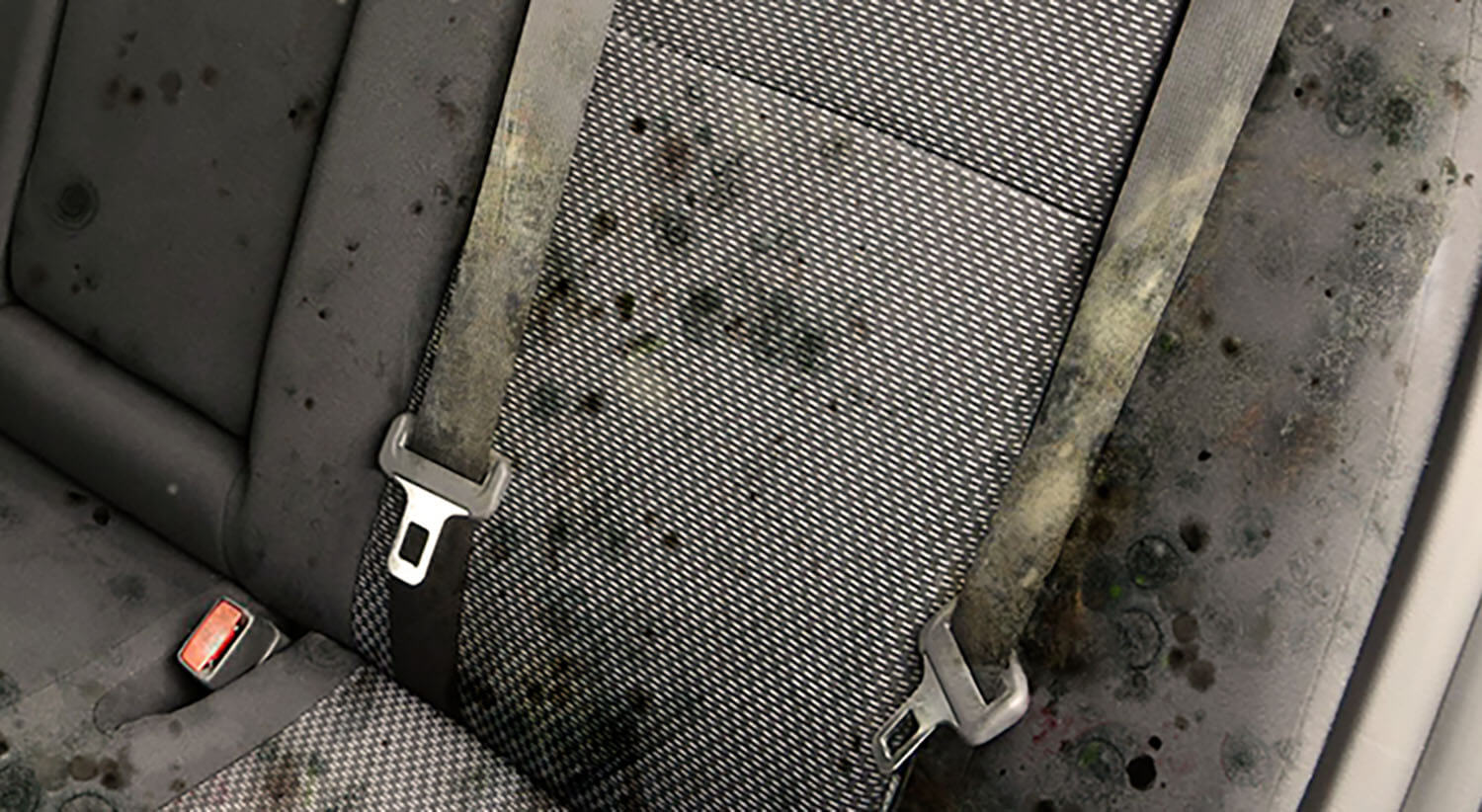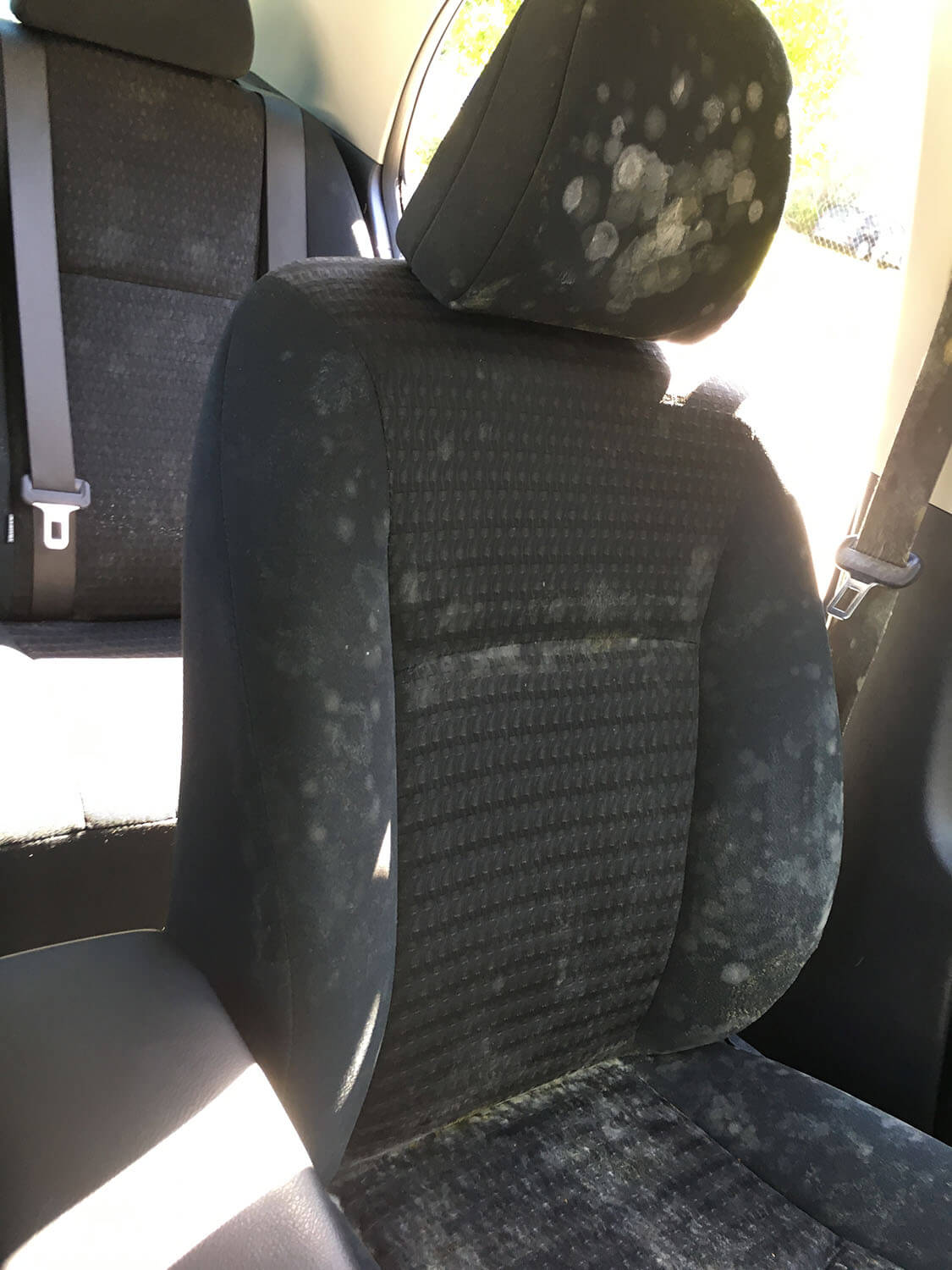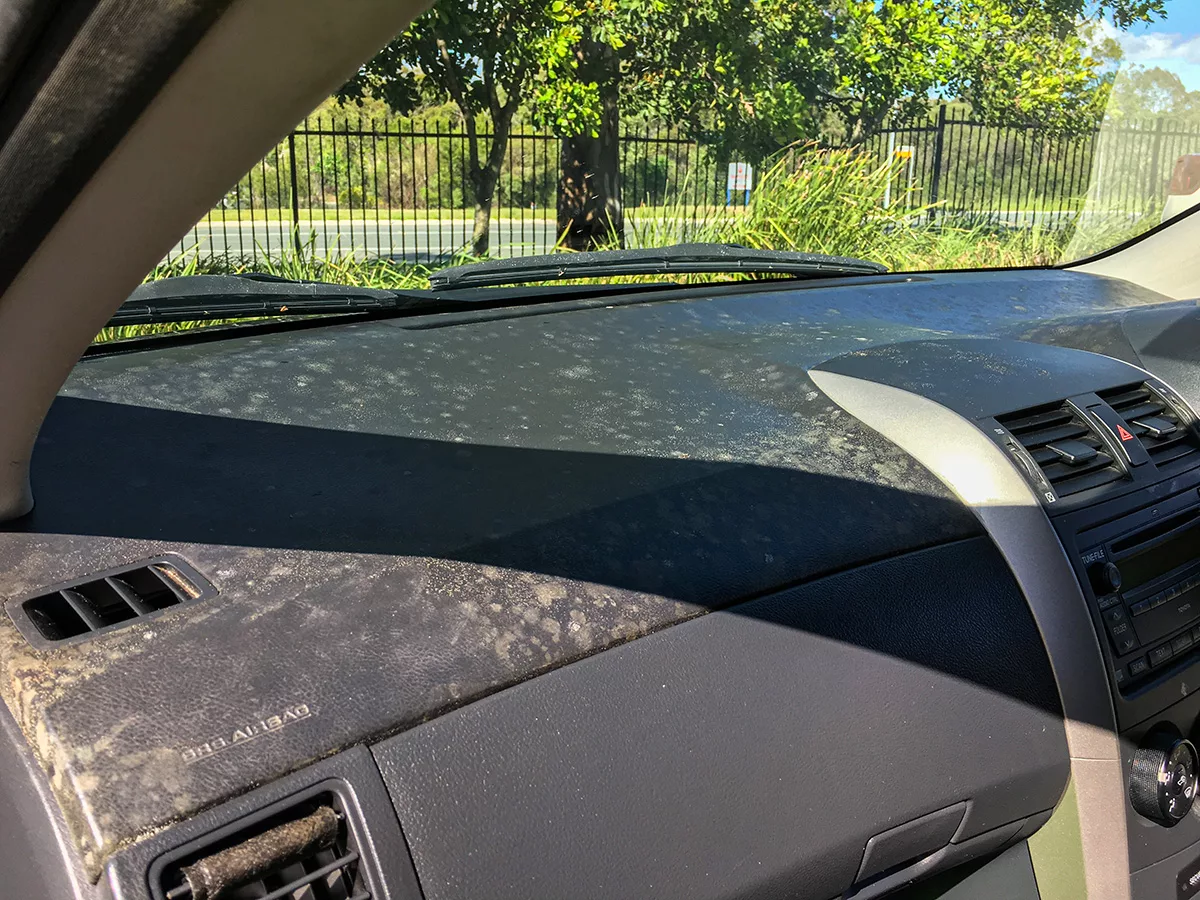Vehicle Mould Decontamination

Vehicle Mould Decontamination
As an industry leader in mould remediation, Juvenaire has studied, trialled and implemented successful mould removal methods into it’s vehicle mould decontamination service. Through stringent testing these advanced methods have proven to be the most successful within the industry.
Benefiting from Juvenaire’s experience advanced mould removal products, Auto-Decon services apply efficient and cost-effective mould removal techniques to affected vehicles.
Vehicle Mould And Moisture
A vehicle damaged by either General or Black Water can also lead to serious mould growth. Mould will grow on any surface that provides moisture and a food source and ultimately affects vehicle carpets, upholstery and other porous materials.
The problem is two-fold. Not only can the hair like strands of the mould spore (the hyphae) permanently damage upholstery, but the spore itself can be harmful for humans if inhaled.
This is why it is important to have mould affected vehicles meticulously treated, so that the restored vehicle can be returned 100% clean and safe.
Thorough vehicle mould decontamination will involve each vehicle being assessed individually, and a remediation plan specific to the vehicle will be applied. Below is a review of the general process associated with each category of water damage:
General Water Mould Damage: treatment traditionally involves drying, cleaning and fogging of the vehicle, followed by a detailed clean.
Black Water Mould Damage: treatment may require the additional removal and treatment or replacement of affected interior parts, together with drying, cleaning and fogging of the vehicle, followed by a detailed clean.


More AutoDecon Information
Learn More
Our Technicians will ensure the safe decontamination and disposal of asbestos affected vehicles.
Juvenaire ensures stringent Workplace Health and Safety processes are all in accordance with government asbestos
Learn More
Forensic clean up includes the removal and decontamination of a vehicle contaminated by blood, faeces, urine and other bodily fluids. Vehicles can become contaminated after a motor vehicle accident, self harm incident or other accidental defecation
Learn More
The manufacture of illicit drugs especially methamphetamine, has increased in private residences, caravans, hotels, garages and inside motor vehicles. Manufacturing methamphetamine involves a cooking process where mixtures of dangerous chemical vapours permeates all porous surfaces.
This fills the vehicle’s interior with harmful chemicals. Determining the extent of contamination is necessary in deciding which internal structures and contents need a thorough clean or possible removal.
Learn More
Vehicle fire and smoke damage can cause strong odour. This is a result of the chemicals produced from burning materials, absorbing into porous materials of the vehicle. Smoke odour can be very difficult to remove but is possible if treated correctly.
Learn More
There are two types of odours, “real odour” a pure sensation of smell transmitted to the brain and ‘psychological odour’ or ‘heightened awareness odour’ that people think they smell based on experience, suggestion and past experience. The latter is the most difficult odour to address for the restoration technician.
Odour can be difficult to eliminate. As such Vehicle assessment will take place on a case by case basis.
Learn More
When water enters a motor vehicle, absorption of water into door linings, seats, carpets, the sub-floor, the dashboard and other soft furnishings can cause serious damage. If left untreated, water absorption can result in mould growth and can cause further damage. Time is of the essence and swiftly addressing a water impacted vehicle is paramount to its successful remediation.